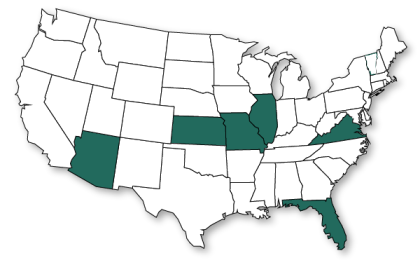 Insurance was an early participant in the Green Power Community Challenge. Each month we post our carbon offset results from our solar energy array on our headquarters in Creve Coeur.
Insurance was an early participant in the Green Power Community Challenge. Each month we post our carbon offset results from our solar energy array on our headquarters in Creve Coeur.
We are proud to be doing our part to make Creve Coeur one of the leading communities nationwide in deriving our power from renewable resources.
This month, our carbon offset is 1.28 tons. We have offset the equivalent of 33 trees.
Thanks to our solar vendor, Microgrid Solar, for the photo.
July Energy Tip – Top 10 Things You Didn’t Know About Wind Power (From the http://energy.gov)
This article is part of the Energy.gov series highlighting the “Top Things You Didn’t Know About…” series. Be sure to check back for more entries soon.
10. Human civilizations have harnessed wind power for thousands of years. Early forms of windmills used wind to crush grain or pump water. Now, modern wind turbines use the wind to create electricity. Learn how a wind turbine works.
9. Today’s wind turbines are much more complicated machines than the traditional prairie windmill. A wind turbine has as many as 8,000 different components.
8. Wind turbines are big. A wind turbine blade can be up to 260 feet long, and a turbine tower can be over 328 feet tall — taller than the Statue of Liberty.
7. Higher wind speeds mean more electricity, and wind turbines are getting taller to reach higher heights above ground level where it’s even windier. See the Energy Department’s wind resource maps to find average wind speeds in your state or hometown and learn more about how taller wind turbines can expand developed areas for wind energy production in the Energy Departments 2015 Enabling Wind Power Nationwide report.
6. Most of the components of wind turbines installed in the United States are manufactured here. There are more than 500 wind related manufacturing facilities located throughout the United States, and the U.S. wind energy industry currently employs more than 73,000 people.
5. The technical resource potential of the winds above U.S. coastal waters is enough to provide more than 4,000 gigawatts of electricity, or approximately four times the generating capacity of the current U.S. electric power system. Although not all of these resources will be developed, this represents a major opportunity to provide power to highly populated coastal cities. See what the Energy Department is doing to develop offshore wind in the United States.
4. The United States generates more wind energy than any other country except China, and wind has accounted for more than a third of all newly installed U.S. electricity generation capacity since 2007.
3. The United States’ wind power capacity reached more than 65.8 gigawatts by the end of 2014.That’s enough electricity to power more than 17.5 million homes annually — more than the total number of homes in Alaska, California, Delaware, the District of Columbia, Hawaii, Idaho, Maine, Montana, Nebraska, New Hampshire, North Dakota, Rhode Island, South Dakota, and Vermont COMBINED- and represents nearly a 25-fold increase in capacity since 2000.
2. Wind energy is affordable. Wind prices for power contracts signed in 2014 and levelized wind prices (the price the utility pays to buy power from a wind farm) are as low as 2.35 cents per kilowatt-hour in some areas of the country. This is the lowest ever price recorded by the Energy Department’s annual Wind Technologies Market Report.
1. By 2050, the United States has the potential to avoid the emission of more than 12.3 gigatonnes of greenhouse gases and save 260 billion gallons of water by continuing to increase the amount of wind energy that powers our homes, schools and businesses. In 2015, the Energy Department released Wind Vision: A New Era for Wind Power in the United States,which quantifies the economic, social, and environmental benefits of a robust wind energy future through 2050.







 O’Connor Insurance was an early participant in the
O’Connor Insurance was an early participant in the  O’Connor Insurance was an early participant in the
O’Connor Insurance was an early participant in the  O’Connor Insurance was an early participant in the
O’Connor Insurance was an early participant in the 

